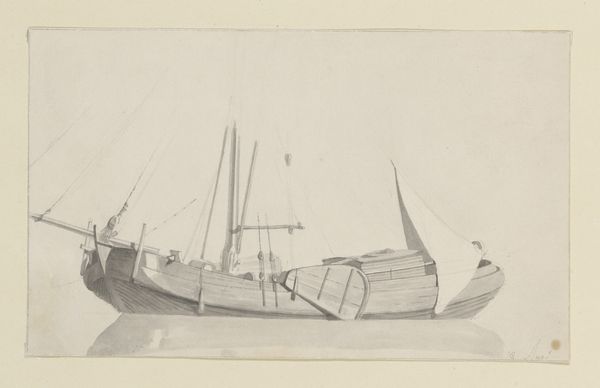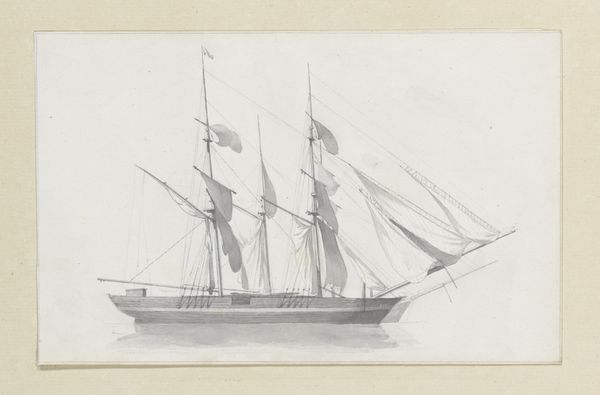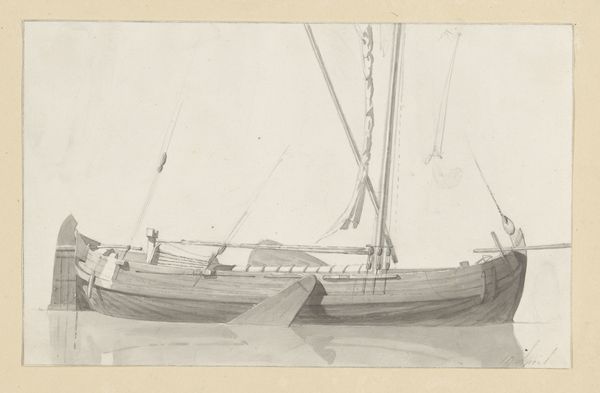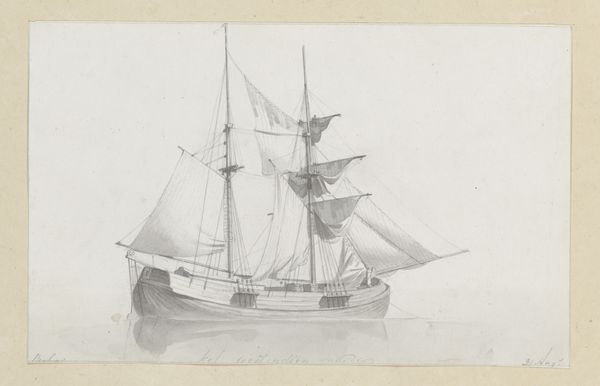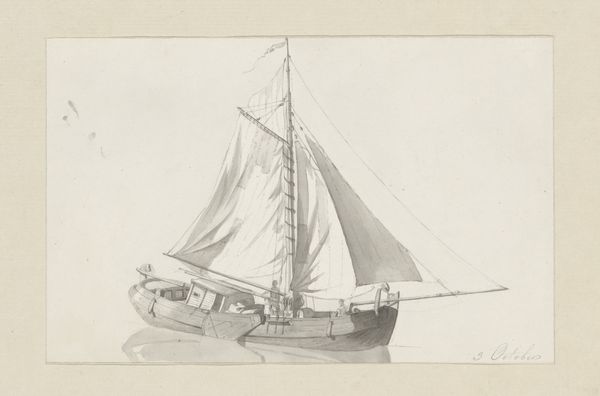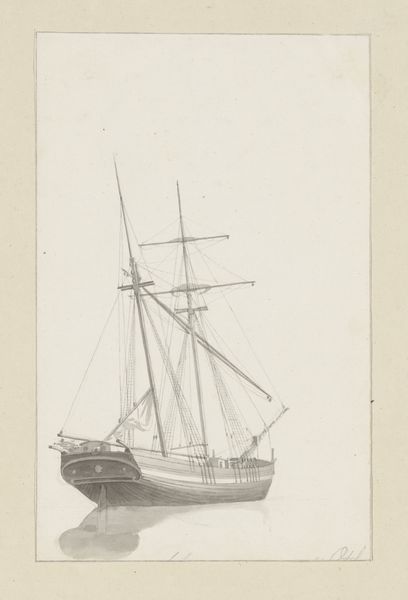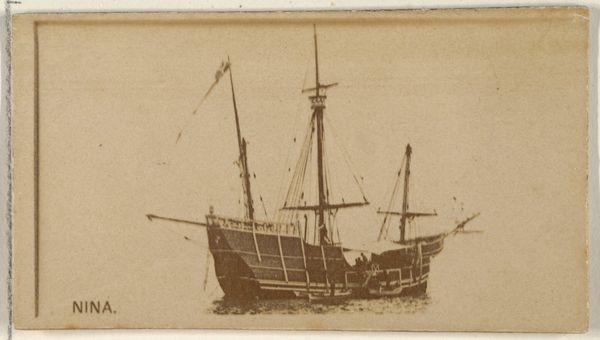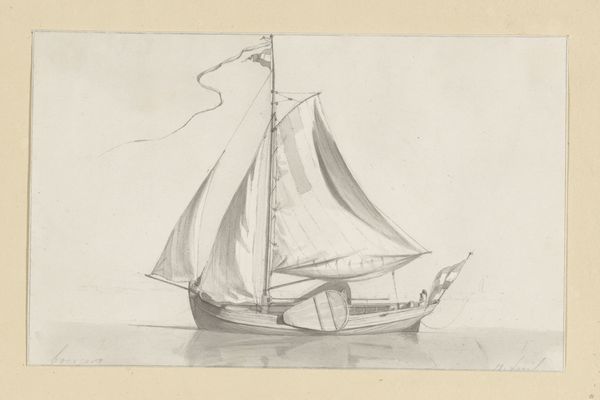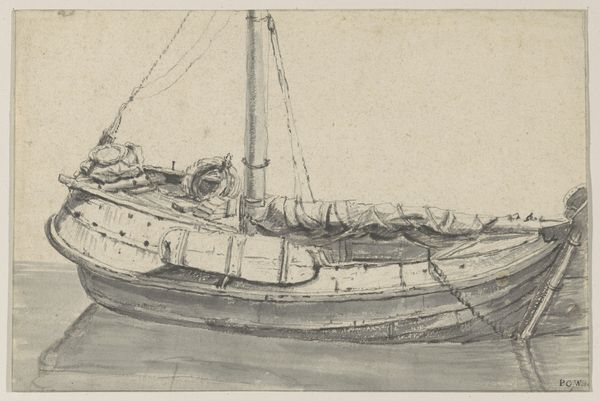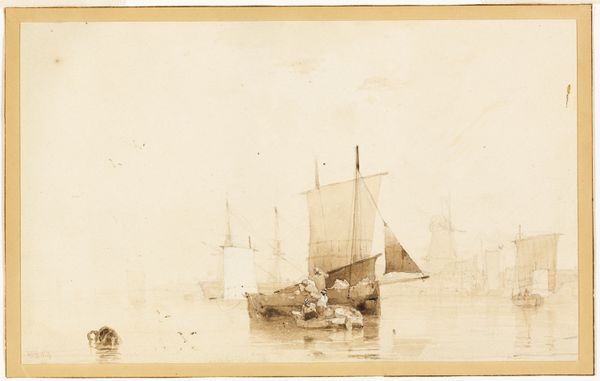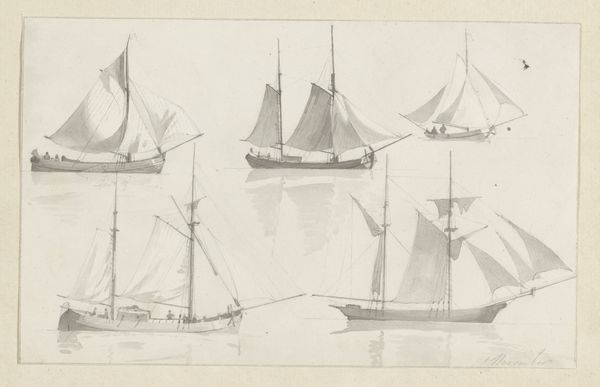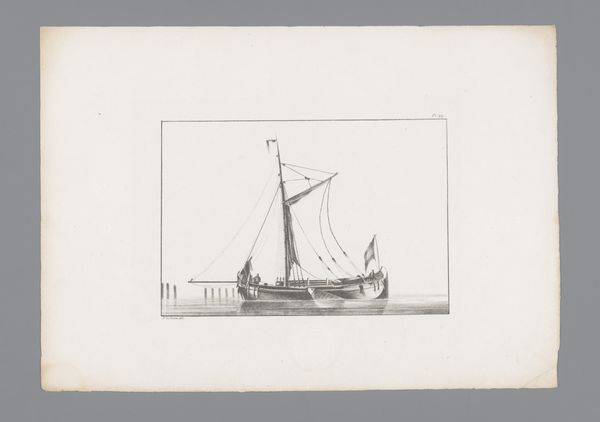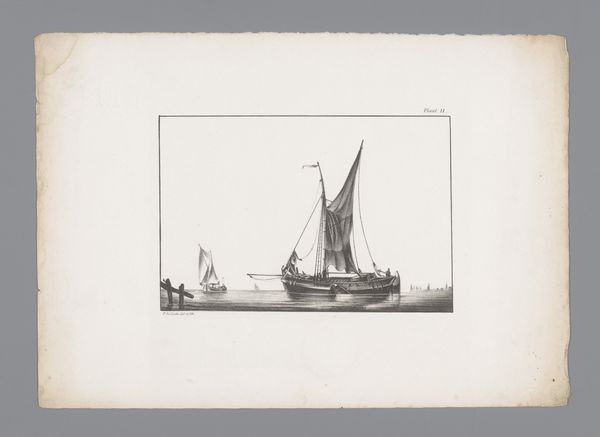
drawing, pencil
#
drawing
#
aged paper
#
light pencil work
#
sketched
#
sketch book
#
landscape
#
personal sketchbook
#
idea generation sketch
#
sketchwork
#
pencil
#
sketchbook drawing
#
storyboard and sketchbook work
#
sketchbook art
#
realism
Dimensions: height 120 mm, width 193 mm
Copyright: Rijks Museum: Open Domain
Curator: Before us, we have Hendrik Abraham Klinkhamer’s “West-Indiëvaarder,” a pencil drawing dating from somewhere between 1820 and 1872, held here at the Rijksmuseum. Editor: It’s evocative. It immediately makes me think about trade, labor, and the very real physicality of ships like this that connected disparate places through often exploitative systems. Curator: Precisely. This drawing depicts a ship involved in trade with the West Indies, a crucial element in the Dutch colonial system. Consider the conditions on such a ship, the power dynamics inherent in its purpose. Who was on board, and under what conditions did they travel and work? What materials were being transported and who was profiting? Editor: You see the sparseness of the pencil lines; they're economical in a way, aren’t they? Think about what it meant to produce ships, the skill, the extraction of resources, the shaping of the wood… It was arduous labor for many involved and yielded wealth for the few, underscoring colonial extraction's human and environmental costs. The ship itself embodies that duality of connection and exploitation. Curator: Absolutely. And that’s where situating this artwork within a broader social and political framework is critical. How do we confront the legacy of colonialism embedded within the image, within the ship’s very existence, even today? The journey the ship took would have transported enslaved people and goods plundered from indigenous populations in lands it would reach. Editor: I agree. To analyze just the artistic quality of the drawing in isolation is inadequate. We must interrogate the physical labor embedded in producing ships like these, extracting the wood, forging the metal – it tells its own story. It pushes us to consider its function within colonial networks of material exchange and exploitation. Curator: Ultimately, it challenges us to decolonize not just our gaze, but also the historical narratives we construct around these objects, and understand their continued resonance. Editor: Yes. Looking at this drawing helps visualize these processes in material terms. The skeletal nature of the image gives us direct access to this analysis.
Comments
No comments
Be the first to comment and join the conversation on the ultimate creative platform.
